The Ancestry of Batman
If your aspiration is to write comics, the quintessential question you would ask yourself is how do I create the next great superhero? If you have, you might have started basing them off pre-existing characters. This is not so unusual. Even cultural icons like Batman were based upon earlier concepts. Created by Bob Kane in 1939, Batman has roots in detective, pulp, and even Gothic fiction.
The Batman we know today is famous for his intellect, his inner turmoil, his heroics, and his dual personality. I have thus traced these traits back through time in search of characters with shared characteristics. In doing so, I have created a family tree of sorts. Hopefully, this will lead us to a better understanding of this extraordinarily popular hero.
Sherlock Holmes (1887)
In one of the earlier episodes of Cartoon Network’s Batman the Brave and the Bold (2008-2011), Batman meets his oldest ancestor, the one and only Sherlock Holmes. The most obvious predecessor, Sherlock is meant to embody logic and order. Batman fills the same role. How do they do it? Well, in Batman’s case it’s often brute force. But born in Detective Comics, Batman is a detective at his core. It is usually his intellect not his physical prowess that gets him through sticky situations. Sherlock too relies on intellect more than physical force. In this case, intellect can be just as forceful as breaking a rib. To compare these two detectives we must study some of their greatest foes.
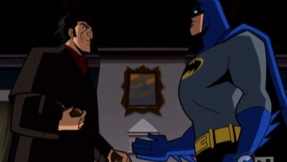
Sherlock’s greatest enemy is Professor James Moriarty, a criminal mastermind. Sherlock describes him as such, “But the man had hereditary tendencies of the most diabolical kind. A criminal strain ran in his blood, which, instead of being modified, was increased and rendered infinitely more dangerous by his extraordinary mental powers.” The two of them are in a constant battle of wits. One such battle occurs in the short story, “The Final Problem (1893).” In that story, Moriarty attempts several times to take Sherlock’s life, but not by his own hand. Instead, he hires other criminals to do the killing for him, for with a mind as great as his, he has no need for physical confrontation himself. Unfortunately, for Sherlock he can’t prove any connection to the criminal mastermind. The detective continues to persist as he believes this will be the greatest case in history, as Moriarty is his only intellectual equal. At the end of the story Sherlock and his partner, Watson, track down Moriarty in Switzerland near the natural landmark Reichenbach Falls. While there, Watson is sent away under mysterious circumstances. Expecting this, Sherlock makes no move to stop him. The narration does not follow Sherlock but instead follows Watson as he discovers Sherlock has finally faced his foe. It is believed that neither party survived this encounter. Later on, in the direct sequel to “The Adventure of the Empty House,” it is revealed that Sherlock outwitted Moriarty and survived the fall, proving at last the Sherlock has the greater mind. Batman has faced a similar enemy.
The Riddler is one Batman’s earliest and formidable enemies. Formerly known as Edward Nygma, the Riddler came to Gotham in pursuit of a challenge. In many of his appearances he is merely a disembodied voice taunting Batman at every turn. In Batman: the Animated Series the Riddler appears several times. In the episode entitled “The Riddler’s Reform,” the Riddler has appeared to have gone straight. But Batman is no fool. Riddler has since gotten in the toy business and uses his costumed persona to market said toys. Through close inspection it is revealed to Batman that it’s all a ruse. Riddler sets up an elaborate trap for Batman to maneuver. As he makes his way through the trap, a bomb is revealed rigged to blow if he were to pass it. Physical force would do little to stop the bomb. But through thought and ingenuity Batman is able to escape unscathed. Astonished, the Riddler asks how he escaped the explosion. Batman responds with “That’s my little riddle.” Riddler than promises to elaborate on all his past crimes if Batman let’s him in on the secret. The episode ends with the Riddler back in Arkham Asylum howling “No way he could have gotten out! Somebody tell me! Do you hear me? SOMEBODY TELL ME HOW HE DID IT! I have to know! I HAVE TO KNO-O-O-O-OW!”
Moriarty and Riddler are pure intellectual challenges, they challenge what Sherlock and Batman are at their very core. They are detectives, not cops or thugs. Where they differ, however, is the fact is that Batman is a detective and a solider. Other Batman enemies need to be defeated physically to be beaten. In these cases, Batman relies on fear which Sherlock knows very little about.
Dracula (1897)
Moving away from logic and order, we take a look at fear. Bram Stoker’s Dracula is a clear visual influence on Batman. Written in 1897 by Irish writer Bram Stoker, Dracula is known for its commentary on colonialism and sexual convention in the Victorian era. But it is better known for creating the modern vampire we all know today. In some ways Batman and Dracula are similar. They both are creatures of the night, they sometimes seem to appear in mist or shadow, and they frighten those who oppose them. But the major difference between these two icons is one is a villain and the other is a hero. Dracula is a monster, pure and simple. And although Batman is a hero, he can be vengeful or frightening. His inner monster has popped up on many occasions. It’s on these occasions that the Dracula influence can be seen.
Dracula is physically imposing, he is described as aristocratic, elegant, and dangerous. What makes him frightening, in addition to drinking your blood, is his strength. If he grabbed you by the throat or even by the arm he could crush it like a toothpick. In one scene, Dracula is about to drink someone’s blood and is described as such “With his long sharp nails he opened a vein in his breast. When the blood began to spurt out, he took my hands in one of his, holding them tight and with the other ceased my neck and pressed my mouth to the wound so that I must either suffocate or swallow…” This is unquestionably a monstrous act, is Batman capable of such acts?
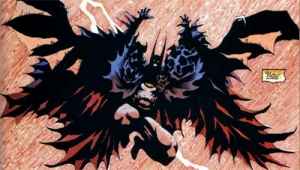
Batman is also physically imposing. In the graphic novel Batman: Hush, Batman comes incredibly close to killing the Joker. He thinks to himself “I could break his ribs and puncture his lungs.” But, thankfully, Commissioner Gordon shows up to remind him Batman is no killer. “If he wanted to be a killer he would have already done it.” Regularly, Batman will hang criminals off rooftops or break their bones to get them to talk. He is willing to do what other heroes, like Superman, will not. In the film Batman and Superman: Apocalypse, Batman is willing to destroy a world to save Earth, is this a heroic act?
Batman’s relation to Dracula at first seems simply visual. But closer inspection would show a similar darkness and malice. Still, Batman has more sides to him. He’s not a monster, although he is capable of monstrosities. His heroic side always wins out in the end, his heroic qualities can been seen in another masked hero.
Zorro (1919)
The pulpiest creation on this list is none other than Zorro or in his civilian identity Don Diego de La Vega. Created in 1919 by pulp fiction writer Johnston McCulley, Zorro made his debut in The Curse of Capistrano. People quickly fell in love with the romantic swashbuckling hero. Shortly after his debut, film star Douglas Fairbanks got his hands on him and produced the film The Mark of Zorro (1920). Don Diego was Californian nobleman living in Los Angeles under Spanish rule. He dons a mask to fight villainy and treachery caused by tyrannical officials. Zorro seems to be a direct influence on Batman. In many adaptions the Wayne family is seen leaving a showing of Mark of Zorro right before the deaths of Mr. and Mrs. Wayne. But unlike Zorro, Batman does his heroics at night.
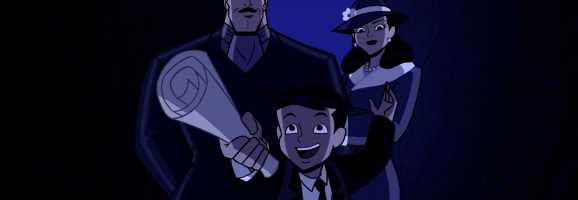
Zorro famously dispatches his villains in a public fashion. In the 1920 film Mark of Zorro, Diego strives to protect the people of Los Angeles from the corrupt Governor Alvarado. Along the way, he courts the damsel Lolita in and out of costume. But when things begin to go awry, Diego can no longer hide behind his mask and he is willing to throw it all away for the good of the people. He demonstrates his skill with a sword and convinces a group of soldiers to join him on his crusade. With them by his side, he is able to force Alvarado to retire and in the process save Lolita from a horrid suitor. It’s in that gesture that he truly proves himself a hero, his secret identity is not as important as the lives of others. His skill with a blade is honorable, his ability to lead is beneficiary, but its his heart and his selfishness that impresses a young Bruce. Bruce Wayne or Batman proves to have just as much skill and heart as his hero.
In Frank Miller’s The Dark Knight Returns, Batman is around fifty years old. He no longer has the strength or endurance he had in his youth, but Gotham needs him as the ever-present threat of a gang called the Mutants grows stronger. Aided by a young woman named Carrie Kelly, Batman embraces the cape and cowl again. Despite his age and failing health he gives it a good fight. When the Mutants are no longer a concern, other disasters follow such as the Joker’s return and a nuclear winter. In the midst of all this horror and death, Batman rounds up former mutant gang members to protect Gotham from absolute destruction. Soon after, the U.S. government sends Superman to cut Batman down to size. They believe he is a menace to society, a political liability, but Batman will not give in. In a world where law is corrupt and innocent people are forgotten and stepped on he cannot and will not step aside. He tells Superman “You’re beginning to get the idea, Clark. We could have changed the world…now…look at us…I’ve become a political liability…and…you…you’re a joke.” Towards the end of this conversation Batman’s failing health catches up with him, presumed dead his civilian identity is revealed to world. Unbeknownst to everyone but select few Batman is alive and training others to take his place as protectors of Gotham.
To be hero we could root for, they need heart and determination. Batman has heart although he doesn’t always show it. Perhaps he learned it from Zorro, but who’s to say really? I think we can attribute Batman’s longevity to his promising intellect, his inner darkness, and his determined crusade to protect humanity. The elements that created Batman are scattered through the human consciousness. The greatest characters are not simply created, but refurbished again and again until its right. I believe this how characters become icons. They must be interesting and perhaps a bit familiar. If all these writers and creators inspired Batman I can only imagine who he might inspire.
What do you think? Leave a comment.
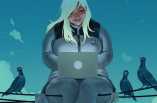
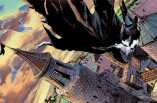
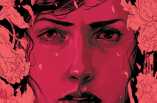
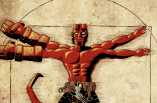
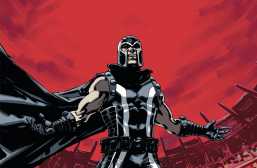
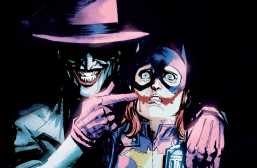
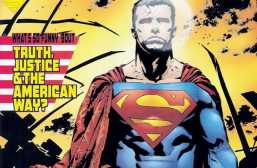
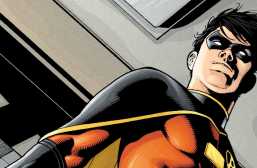
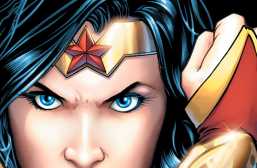
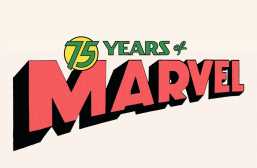
Great article. I get Holmes and Dracula, but I would have never thought to compare Batman with Zorro. I like your exploratory history of each of the literary characters.
Molto Bene! I’m really glad you went for the original text for Moriarty it really pulls the article together very nicely. I also find your comparison to Zorro to be very interesting, it’s not one I would have thought of. Do you know if there was anything said about Zorro being an actual inspiration or was that entirely your own conclusion? Just wondering =].
I don’t think there’s been any confirmation that Batman is inspired by Zorro but a few Bat-writers have made allusions to it. Thank you for the suggestions and the comment!
Batman himself has a contemporary named The Black Bat, a pulp-fiction hero, whose origin has a little more in common with Daredevil, who himself could qualify.
I will check that out!
Related characters of note:
Green Hornet.
The Shadow.
Boston Blackie.
What about The Count of Monte Cristo?
The Punisher? And the related characters of Mack Bolan, Remo Williams, etc.
A really fantastic article, I’ve gotta say! It’s probably also notable that Bats (at least in his earliest incarnation) owed something to the existence of pulp heroes like Doc Savage and the Shadow, but your explanation of how the Dark Knight fits into the traditions of giants like Holmes is an absolutely fantastic one. Looks like I’m gonna have to read more of your articles, eh?
Thank you so much! I have not heard of the Shadow but I have heard of Doc Savage. I have to check these guys out!
To be honest, I would never have considered Sherlock Holmes to have some biological relation to Batman. However, this idea is not impossible and only adds complexity to both characters. I wonder who else could Batman have been based on?
First off, I enjoy your comparison to Sherlock Holmes and I am almost sold on Dracula. I hadn’t thought of Dracula as an influence but you’ve got me thinking.
If you’ll accept a bit of criticism, I have a few points to make. I would dig deeper into the early stories of Batman, I would reference the comic books more than films or cartoons. They are two very different entities.
Bob Kane and Bill Finger created Batman. It was Bill Finger’s writing that fleshed out a lot of the mythos of Batman.
Look at the “The Bat” a silent film form 1926 based off of an earlier Broadway play that served as visual influence of Batman for Bob Kane.
I agree with those that suggested The Shadow as well…major influence. And Bill Finger also cites The Phantom as another influence.
I think you will find a long list of super heroes tied to literary comparisons. This could keep you busy for quite some time.
Thanks for the criticism! It seems there are many influences I have overlooked. I’ll look in to these, thank you!
I have to agree with Jamie. I think that you have a solid claim that the character we have come to identify as Batman is an amalgamation of several dark heroes, i.e, Holmes, Dracula, and Zorro.
However, I think that your argument is complicated by the many reiterations and reinventions of Batman that we’ve seen over the last eight decades, i.e., Batman played by Christian Bale is not the same Batman seen in “Batman: The Animated Series.”
I think there is interesting room for inquiry into the nature of Batman retellings; there seems to be a correlation between Batman portrayals and America’s economic development over the last eighty years.
More importantly, if you want to make a claim to the original Batman’s character, it would be fruitful to dig into the cultural history of 1920s and 1930s Noir detective stories to get a better sense of the literary tradition from which Batman emerges.
Great article.
This is really fascinating. I always have compared Batman to a modern interpretation of Sherlock Holmes, but I’ve never thought of the similarities between him, Dracula, and Zorro. Definitely gives me a new perspective on my favorite DC superhero.
Stephen Maturin (of the Aubrey/Maturin novels) is a good one.
I think it’s really powerful how you note that “The greatest characters are not simply created, but refurbished again and again until its right.” It says something about the universal appeal of a figure like Batman, and how we are in an age where people worship (via the box office) superheroes. Back in Roman times, people worshiped the gods and demi-gods in a similar way. Similar figures are universally appealing across all of time. Good article.
I haven’t followed Batman through the later movies, but your article has me intrigued. I am fascinated by Batman getting old. Using your ancestry theory (a.k.a. intertextuality) I believe you could trace his tree back to the Bible, or Greek heroes. You could also look at Norse Mythology. It would be interesting to see what you find. As you say so eloquently, “The elements that created Batman are scattered through the human consciousness” is so true. However, I will disagree slightly that greatest characters are refurbished until right, because it’s the flaws and the inner darkness that make such classic heroes so appealing. I look forward to more on this (but please, have someone proofread for the little typos and missed words.)
I feel like the language of Ancestry, (i.e., Descent), in the title gives the reader the impression that this essay is in some ways a genealogy, à la Friedrich Nietzsche and Michel Foucault.
I’m in agreement with @Twila that this this project could benefit from a study of the “roots,” i.e., Judeo-Christian, Greek, and Roman hero narratives.
I think that the assertion, “The elements that created Batman are scattered through the human consciousness,” sounds an awful lot like a Foucauldian claim that Batman is a body of discourse in the same way that notions of gender, race, and the primitive Other are discursive constellations.
Methodologically, I think that this essay would benefit from an explicit nod to either intertextuality theory or Foucauldian genealogy, (which are both articulated, (to an extent), in Foucault’s essay “Nietzsche, Genealogy, History.”
In general, I think that this essay is fantastic and opens up a possible inquiry which could easily fill an entire book. Thank you.
A couple of people already pointed this out, but there was definite inspiration drawn from a lot of pulp heroes like Doc Savage, The Shadow, Dick Tracy and Sherlock Holmes (which you mentioned). Also you might want to check out “The Scarlet Pimpernel”, which served to feature the first real “secret identity” hero and a direct inspiration to Zorro (and later, Batman).
This is a good example for the argument that not everything has been done. In retrospect, it seems so obvious that Batman, and any other comic book character, was inspired by some literary or pop culture character before it, but the differences in portrayal, style, and audience of Batman and Sherlock Holmes, Dracula, or Zorro are outstanding. Good art seems to come from combining ideas that were left by someone else and reshaping them as an experiment. The basic concepts at the center of these characters is still intact as they get used over and over. Humanity relives the same experiences throughout history but in different fashion, which is how we keep getting new characters and stories. Every idea has been done, but not in every way it can be.
For years and years, Batman was the fan-favorite character in a poll run annually in Comic Shop World. I think part of the success of the character is, as you put it, his spiritual ancestry. There’s a lot of powerful archetypes at work in the Batman persona.
In addition to the ones you list, I’d go back into mythology — Batman is an avatar of Justice for the helpless, so there’s elements of Hecate (curses are the poor man’s divine justice) and Horus in Bat’s make up.
Sorry – that’s Comic Shop News.
There was Batsowl a british comic book from 1918. Batsowl’s secret identity was Earl Desmond Devance had a rudimentary bat cave and was inspired by The Phantom of The Opera and The scarlet Pimpernel.
It does have hints of Maltese Falcon as well if you think about it, as well as Phantom of the Opera.